These are the most recent images, taken late last night, because we needed a buffer between posts of too-similar images, and I don’t feel like using the raindrops-on-roses pic right now (they’re coming, Julie Andrews.) Plus, I was a little surprised by two of these, anyway.
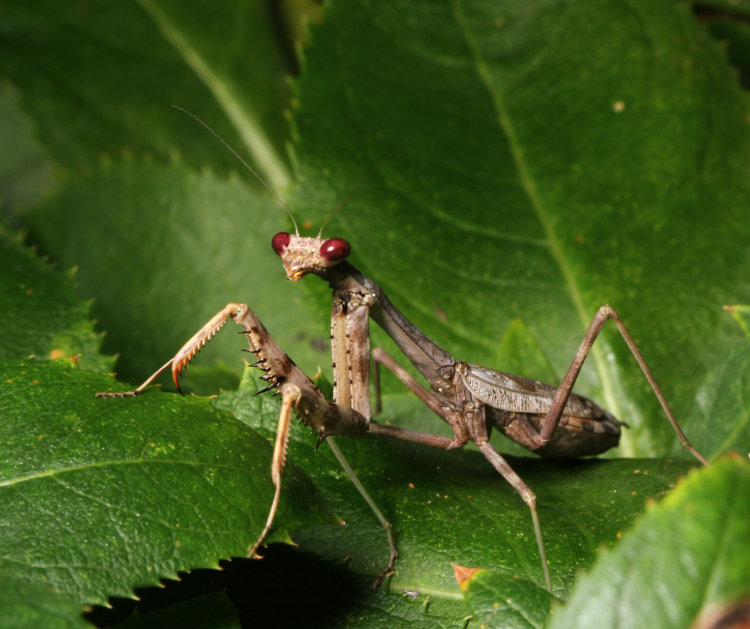
I’m trying to remember if I’ve seen this species twice this season, or only once. Regardless, it’s a Carolina mantis (Stagmomantis carolina,) now in adult form and sporting what appears to be a baby bulge. This was right outside the door at Walkabout Estates, on the balloon flowers (Platycodon grandiflorus) within the planter, which was curious because the last time I had seen the species was weeks ago at least. She provided a few useful poses but then vanished within an hour or so, and I’ve been carefully examining the plants nearby since then, both for her and for any egg sac that she might have left behind – no luck on either account yet.
Then at the same time (well, a minute or so later,) I found this pair on the oak-leaf hydrangea (Hydrangea quercifolia) in The Jumgle:
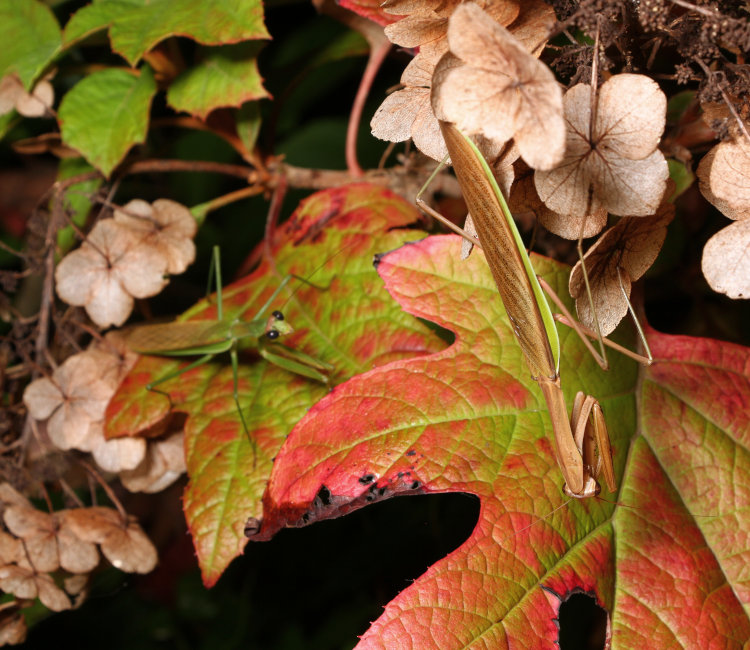
I could be wrong, but there was a size disparity between these two specimens of Chinese mantis (Tenodera sinensis) and I believe they may have been courtin’, as it were. Both were making only minor movements and stayed roughly in position for well over an hour, but the one in the foreground (likely female) seemed to be paying little attention to the (likely) male, who remained fixed in this position facing the female – isn’t it always the way? Don’t take that bait, fella! You don’t need a gal that resorts to that old ‘feigned indifference’ in your life. What might remain of it, anyway…
[It does not appear to be true that the female consumes the male after or during intercourse – this seems to have occurred only in captivity – but no matter what, they’ve both got only a few months to live anyway, being single-season arthropods. Despite trying to get out of ‘single-season’…]
By this morning, I could only find one, which I’m taking to be the male judged on size, but I didn’t specifically measure either of them so I could be wrong. The Jungle has countless places to secure an egg sac that I might never find, so even if I look carefully it could be a waste of time. And it wouldn’t get placed this quickly anyway, though I admit that I don’t know how long it actually takes to gestate to egg form within the female.
This hydrangea sits only a few meters from the small Japanese maple that marks the corner of The Jungle (mostly for mowing purposes, because if they had their way the various vines within would expand their range significantly,) so I had to check while there, and sure enough, my newborn friend is still using it as a sleeping spot.
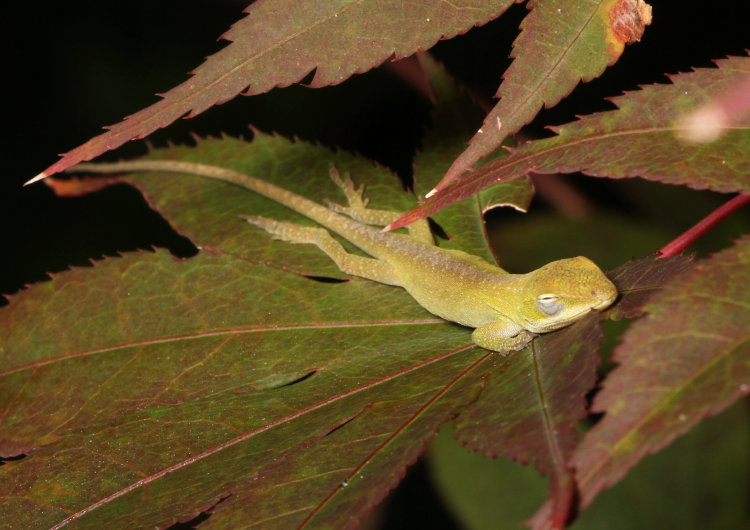
This was actually a little surprising and gratifying, because the day before both The Girlfriend and I had seen another, slightly larger specimen that appeared to be getting territorial over the tree, with this one about as far out on an outer leaf as possible, away from the interloper. I don’t intervene often, but this guy seems to really like his tree, so I gently slid my fingers into the foliage and convinced the other to move off a bit. Appears to have worked. And in fact this morning, as the sun was just getting high enough to shed some heat onto these leaves after the crisp night, we found this guy easing along and sipping dew from the leaf surfaces.
You know, while I’m here I’ll clear out a few photos from several days back, since they’re closely related.
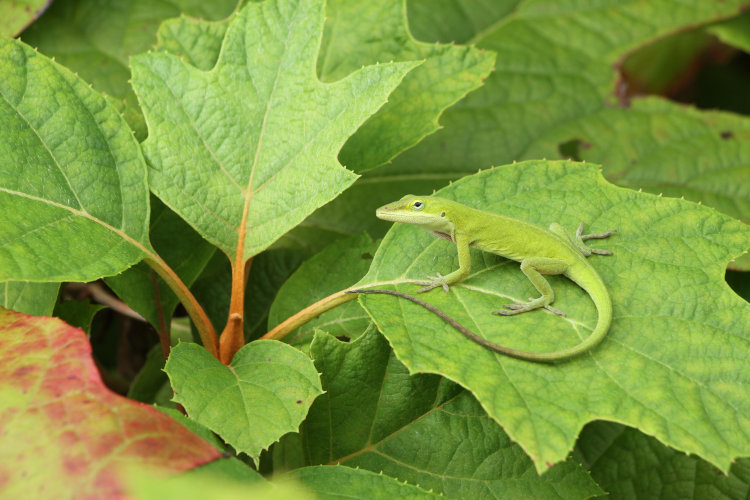
I have yet to snag one of the newborns anoles on the a leaf of the hydrangea, at least this year, so we don’t have any comparative shots with this adult. Not that it would matter too much anyway, since those leaves come in a very wide variety of sizes, but you might be able to get an idea of the anole’s size by looking at the ratios of head and body girth. Meanwhile, we slide further out for a more establishing shot:
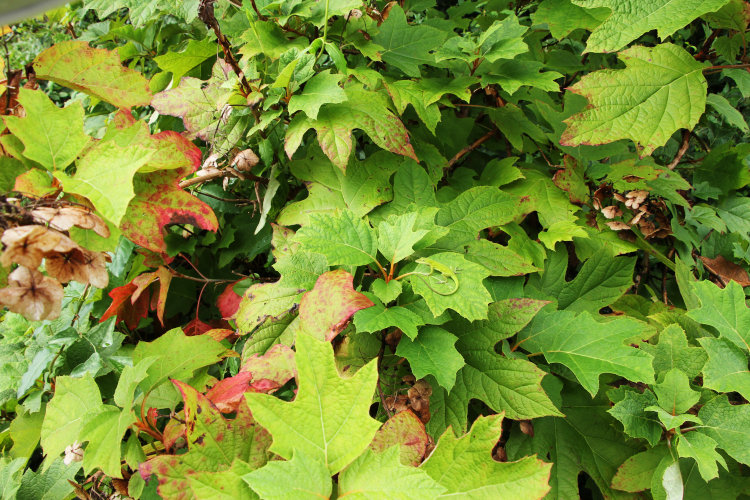
This is roughly the entire width of the plant, though it’s twice as tall. It gives a good idea of what it takes to spot them – they’re not terribly subtle, yet still blend in well enough that you have to be looking.
And a closeup:
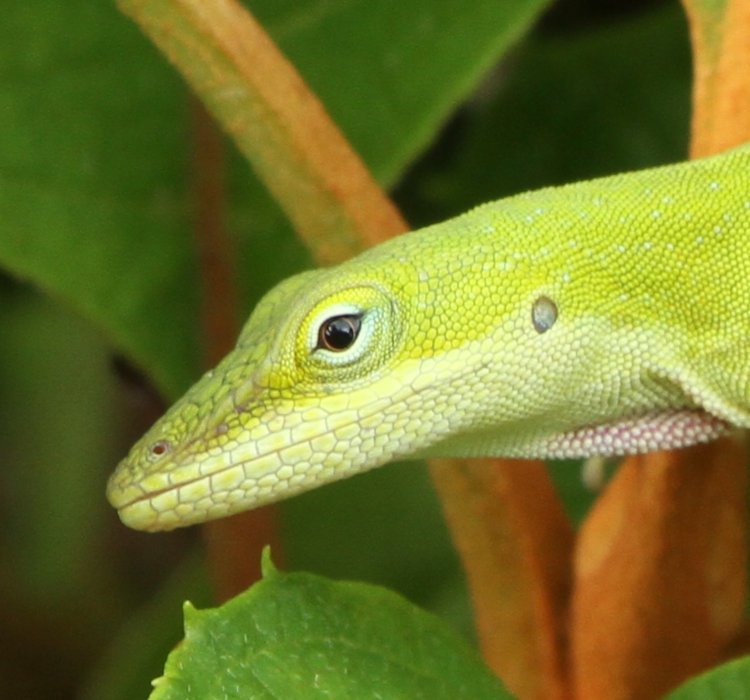
I can’t tell if this is intentional or only a factor of my shooting angle, but you can make out a hint of the pink dewlap under the anole’s neck. This is for both territorial displays and to show off for females, and I’ve seen other specimens treat me to the full display – probably a warning, but who knows? This one, however, did nothing more than watch me warily, so I’m taking this to be just a casual capture. Meanwhile, check out the brown eyes.
No whiskers on kittens coming along, but more birds are in the post lineup. You know where to find them.



















































